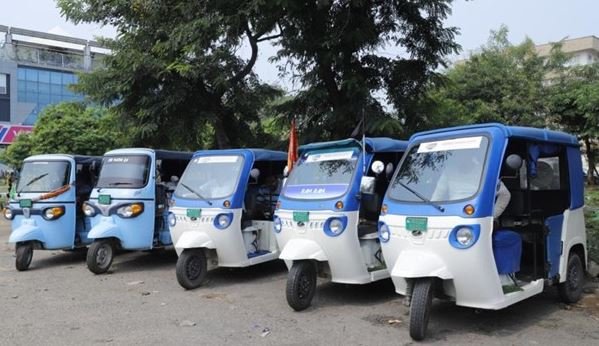The introduction of the e-auto zonation policy in Jammu has opened up an intense debate about the delicate balance between urban management and social livelihood. Designed to bring order to the growing fleet of electric vehicles and ease traffic congestion, the colour-coded zonal system has instead revealed the deep and often overlooked complexities of urban transport reform. What was meant to be a rational exercise in city planning has, in its trial phase, exposed the tensions that arise when administrative intent meets the realities of everyday mobility.
At its core, the policy seeks to create designated operational zones for e-autos, e-rickshaws, and e-carts across Jammu. Each vehicle is now allowed to function within a defined area marked by a specific colour, with inter-zone travel strictly limited. In principle, this may appear as a step toward systematic regulation aimed at reducing chaos, avoiding overlapping routes, and ensuring smoother traffic movement. Yet on the streets, the impact has been far from seamless. Commuters find themselves stranded mid-journey, forced to change vehicles at invisible zone borders, while drivers are struggling to make ends meet as their working areas shrink. The result has been a city divided not by geography but by regulation, where the efficiency of movement, a hallmark of urban life has been momentarily disrupted. For commuters, the confusion is both practical and psychological. Someone travelling from Gandhi Nagar to GMC Hospital, or from Gummat to the Railway Station, now faces multiple breaks in a short trip. Elderly passengers, patients, and parents with children find the new system cumbersome. While most agree that Jammu’s traffic needs better management, few expected a reform that would multiply their travel time and cost. Public frustration at transfer points like Jewel Chowk and Bikram Chowk underscores a truth that often gets overlooked in administrative planning that transportation is not just a technical issue but a human one, deeply intertwined with daily convenience and dignity. The drivers’ story is one of economic distress and disillusionment. Many of them invested in e-autos believing they represented a sustainable and profitable future. Now, restricted to shorter routes and lower passenger volumes, their incomes have been severely affected. For those who rely on day-to-day earnings, even small regulatory shifts can mean the difference between sustenance and struggle. Their protests are not merely about resistance to change but about survival. They argue that they were never adequately consulted and that the scheme, however well-intentioned, was rolled out without the necessary social dialogue that ensures inclusion and fairness in policy-making. From the administration’s perspective, the logic behind the initiative is sound. Jammu’s rapid proliferation of e-autos had indeed created traffic challenges, with random stoppages, unsafe overtaking, and congestion at intersections. The Regional Transport Office has emphasized that the scheme is on a trial basis, open to feedback and revision. This willingness to adapt is commendable and should remain central to the policy’s future. Urban reforms succeed only when they evolve in dialogue with the people they affect. Jammu’s zonation experiment can still become a model of participatory governance if it listens, learns, and adjusts. There is also a larger lesson embedded in this episode: urban transformation cannot be achieved through control alone. It requires empathy, consultation, and a phased approach that aligns regulation with readiness. The informal transport sector, which serves as the lifeline of many Indian cities, cannot be abruptly disciplined into formality without support mechanisms such as financial aid, retraining programmes, or alternative routes of operation. The idea of creating a greener, more efficient Jammu is laudable, but such goals must not come at the expense of livelihoods or accessibility.
As Jammu continues to modernize, the city must remember that mobility is both a right and a responsibility. Policymakers must view roads not merely as traffic conduits but as shared spaces where governance, economy, and everyday life intersect. The success of the zonation policy will depend not on how strictly it is enforced but on how fairly it evolves. If the administration can turn this trial into a collaborative model where drivers, commuters, and planners all have a voice, it could transform Jammu into a case study of sustainable, inclusive urban mobility. Until then, the city remains at a crossroads, balancing order with opportunity and reform with resilience.




